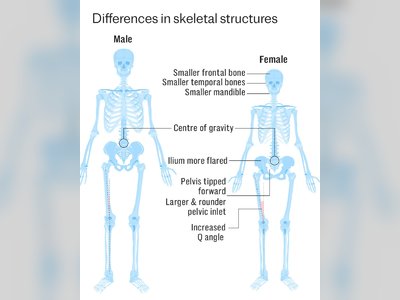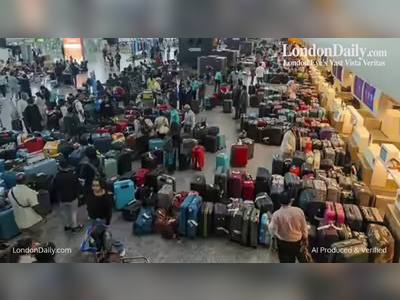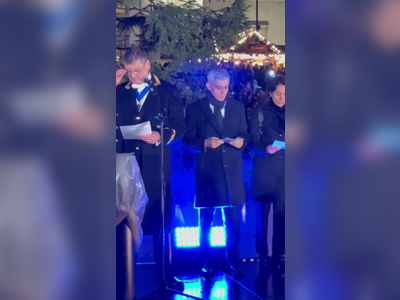
Bahamian government moving against shantytowns
The Bahamas government says to date it has no idea as to how many people died in the shantytowns in Abaco more than two years after Hurricane Dorian slammed into the country as it urged Bahamians to follow health and immigration laws and the building code.
Deputy Prime Minister and Minister of Public Works, Desmond Bannister, told Parliament that he was perturbed about recent operations conducted in the Abaco Shantytown and the second phase of the planned operation.
“Over the past few decades, thousands of persons have deliberately occupied lands in this country that they do not own. In the process they have created shantytowns throughout the country in breach of the laws.
“Many of them have open holes for toilets; unlawful or no connection to the electric grid; pirated or no connections to water. The residences are not inspected, and do not meet building codes. Conditions are unsanitary; noncompliant and unlawful businesses flourish; and stolen goods proliferate,” he said, adding “several such communities have existed on the island of Abaco”.
Bannister said that Hurricane Dorian when it slammed into the archipelago on September 1, 2019, killing many people and causing US$3.4 billion in damage, it had also exposed some of the dangers of these unregulated communities when it wiped three of them out, the Mud, the Pea and Sandbanks. “I vividly recall the horror that residents reported. I recall the devastation, and I will never forget the stench of decaying bodies. To this date, we still do not know exactly how many persons died in those shantytowns,” said Bannister.
He cited two orders issued by the Supreme Court in March 2018 and December 2018 that impacted both the government and shantytown squatters.
“The position prior to hurricane Dorian was that the courts prohibited the government from demolishing shantytown structures that had already been constructed and at the same time prohibited anyone from constructing, erecting or altering unregulated shantytown buildings anywhere in The Bahamas.
“The government obeyed the Court Order, as it is obliged to do; however, many of these persons continued to unlawfully construct new buildings in shantytowns all over the country, and to enlarge existing buildings.”
Bannister said that the legislation was enacted to protect everyone and that the devastation in the Mudd as a result of Hurricane Dorian clearly demonstrates how persons can be injured and killed when structures are not built in accordance with the law.
He told legislators that 30 of the buildings survived Hurricane Dorian and following its passage, the government cleared all of the ruined buildings in the Mudd, Pea and Sandbanks and enclosed the areas.
He said residents responded by constructing unregulated buildings including a tract of land referred to as “The Farm.”
Bannister told Parliament of the challenges in the shantytowns including unsanitary and unhealthy practices which endanger health through the pollution of the water table with human feces, the proliferation of commercial sized generators, the sale of electricity, theft of electric wires, haphazard connections to provide electricity to the shanty houses, unregulated proliferation of services such as unlicensed shops and the sale of stolen goods.
“Unfortunately, many of these breaches of the law are facilitated by Bahamians who also have benefitted financially by unlawfully providing services to unregulated communities. One such example at the Farm was the nightly provision of heavy equipment to construct roads, thereby enabling the construction of even more unregulated structures,” he said.
He said the government responded by authorizing the Minister of Public Works to review the challenges associated with The Farm, and to coordinate such actions required to ensure that the unlawful practices are stopped.
Government agencies including the Royal Bahamas Police Force; the Royal Bahamas Defence Force; the Immigration Department; Bahamas Customs; Bahamas Power and Light; and private sector partners coordinated a multi-‐phased plan, the first phase of which was executed on March 8.
Accordingly, all illegally created access roads except for one were blocked with large boulders.
Large signs in English and Creole that warn that structures that are erected contrary to the provisions of the Buildings Regulation Act or the Building Code will be demolished, and that persons who erect structures contrary to the provisions of the Planning and Subdivision Act will be subject to prosecution, and the buildings will be demolished.
The signs also warn that the Supreme Court has ordered that no action is to be taken to construct, erect or alter new structures.
Moreover, the plan also includes the confiscation of commercial generators and the closure of illegal bars and commercial operations.
Bannister said all incomplete and unoccupied structures will be demolished in accordance with the notices that were posted pursuant to the provisions of the Planning and Subdivisions Act in the second phase.
Furthermore, after 28 days the third phase of the operation will begin with the demolition of the other structures in accordance with the provisions of the Building Regulations Act.
The authorities have said in the past that the shantytowns are mainly occupied by illegal migrants from Haiti.
“Over the past few decades, thousands of persons have deliberately occupied lands in this country that they do not own. In the process they have created shantytowns throughout the country in breach of the laws.
“Many of them have open holes for toilets; unlawful or no connection to the electric grid; pirated or no connections to water. The residences are not inspected, and do not meet building codes. Conditions are unsanitary; noncompliant and unlawful businesses flourish; and stolen goods proliferate,” he said, adding “several such communities have existed on the island of Abaco”.
Bannister said that Hurricane Dorian when it slammed into the archipelago on September 1, 2019, killing many people and causing US$3.4 billion in damage, it had also exposed some of the dangers of these unregulated communities when it wiped three of them out, the Mud, the Pea and Sandbanks. “I vividly recall the horror that residents reported. I recall the devastation, and I will never forget the stench of decaying bodies. To this date, we still do not know exactly how many persons died in those shantytowns,” said Bannister.
He cited two orders issued by the Supreme Court in March 2018 and December 2018 that impacted both the government and shantytown squatters.
“The position prior to hurricane Dorian was that the courts prohibited the government from demolishing shantytown structures that had already been constructed and at the same time prohibited anyone from constructing, erecting or altering unregulated shantytown buildings anywhere in The Bahamas.
“The government obeyed the Court Order, as it is obliged to do; however, many of these persons continued to unlawfully construct new buildings in shantytowns all over the country, and to enlarge existing buildings.”
Bannister said that the legislation was enacted to protect everyone and that the devastation in the Mudd as a result of Hurricane Dorian clearly demonstrates how persons can be injured and killed when structures are not built in accordance with the law.
He told legislators that 30 of the buildings survived Hurricane Dorian and following its passage, the government cleared all of the ruined buildings in the Mudd, Pea and Sandbanks and enclosed the areas.
He said residents responded by constructing unregulated buildings including a tract of land referred to as “The Farm.”
Bannister told Parliament of the challenges in the shantytowns including unsanitary and unhealthy practices which endanger health through the pollution of the water table with human feces, the proliferation of commercial sized generators, the sale of electricity, theft of electric wires, haphazard connections to provide electricity to the shanty houses, unregulated proliferation of services such as unlicensed shops and the sale of stolen goods.
“Unfortunately, many of these breaches of the law are facilitated by Bahamians who also have benefitted financially by unlawfully providing services to unregulated communities. One such example at the Farm was the nightly provision of heavy equipment to construct roads, thereby enabling the construction of even more unregulated structures,” he said.
He said the government responded by authorizing the Minister of Public Works to review the challenges associated with The Farm, and to coordinate such actions required to ensure that the unlawful practices are stopped.
Government agencies including the Royal Bahamas Police Force; the Royal Bahamas Defence Force; the Immigration Department; Bahamas Customs; Bahamas Power and Light; and private sector partners coordinated a multi-‐phased plan, the first phase of which was executed on March 8.
Accordingly, all illegally created access roads except for one were blocked with large boulders.
Large signs in English and Creole that warn that structures that are erected contrary to the provisions of the Buildings Regulation Act or the Building Code will be demolished, and that persons who erect structures contrary to the provisions of the Planning and Subdivision Act will be subject to prosecution, and the buildings will be demolished.
The signs also warn that the Supreme Court has ordered that no action is to be taken to construct, erect or alter new structures.
Moreover, the plan also includes the confiscation of commercial generators and the closure of illegal bars and commercial operations.
Bannister said all incomplete and unoccupied structures will be demolished in accordance with the notices that were posted pursuant to the provisions of the Planning and Subdivisions Act in the second phase.
Furthermore, after 28 days the third phase of the operation will begin with the demolition of the other structures in accordance with the provisions of the Building Regulations Act.
The authorities have said in the past that the shantytowns are mainly occupied by illegal migrants from Haiti.











